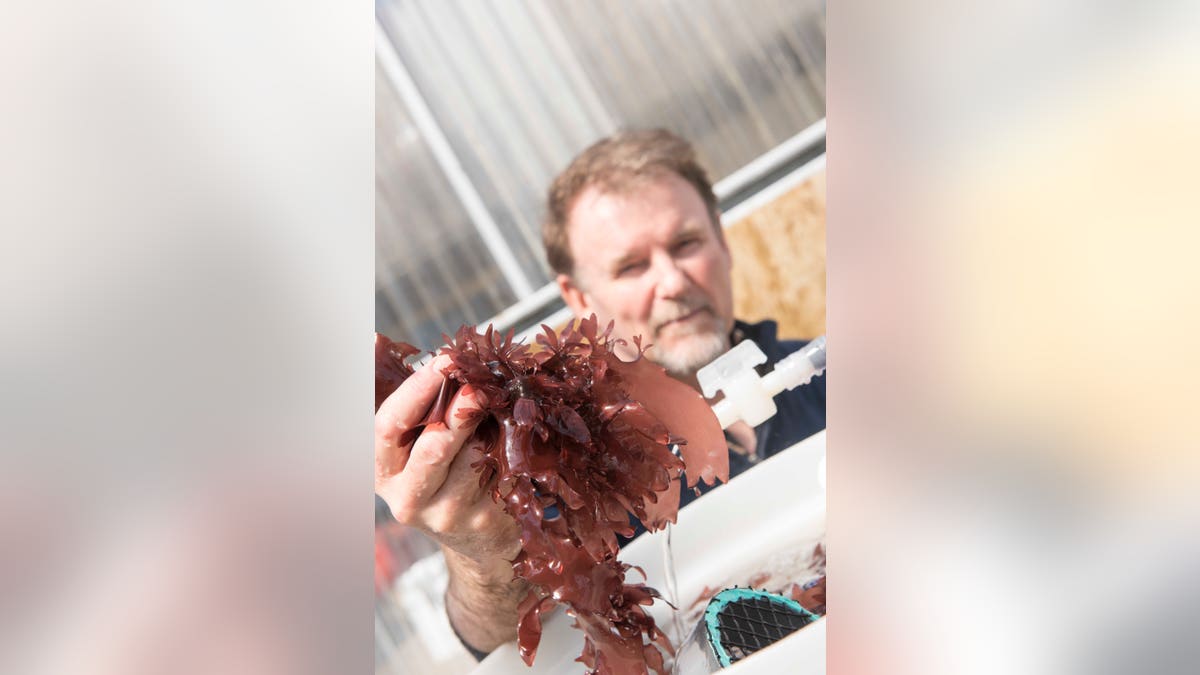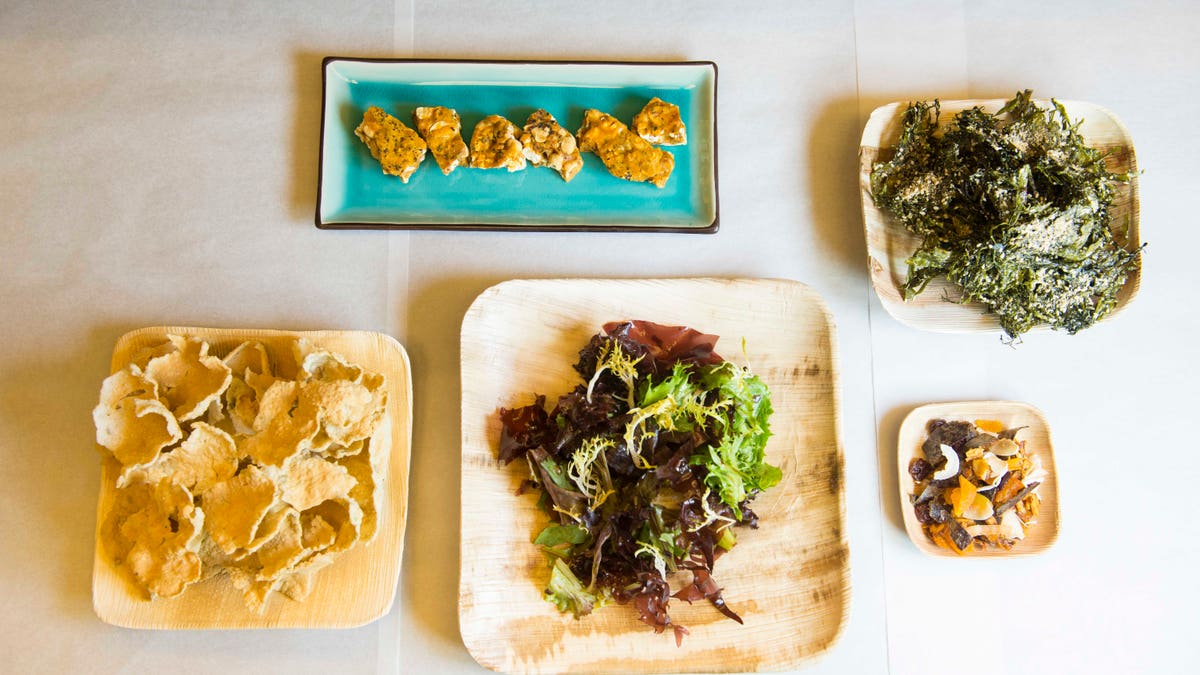Dulse seaweed won’t replace bacon but it’s still delicious
Chew On This!: Gourmet meat purveyor Pat LaFrieda weighs in on a seaweed that may give bacon a run for its money
America loves bacon.
But what if there was a way to get that salty, smoky goodness without all the fat, calories and heart-clogging cholesterol?
Researchers at Oregon State University say you can with a type of seaweed called dulse that tastes similar to bacon when it’s cooked.

Chris Langdon has been growing and studying dulse at Hatfield Marine Science Center in Newport Oregon for decades and is now working with the Food Innovation Center in Portland on creating healthly and appealing dishes. (© 2015 Oregon State University)
Chris Langdon, professor of fisheries at OSU, told FoxNews.com that he noticed above average growth in abalone-- a large mollusk-- that consumed the nutrient rich dulse seaweed. Humans along the coast of Northern Ireland have been eating wild dulse for over 500 years for its nutritional value, but the trick for was to make it palatable for today’s discerning eaters.
“Abalone don’t care what the dulse looks like,” Langdon said. “For humans, appearance and consistency are very important.”
Dulse is a hearty seaweed with a dark red color, with curly edges similar to a small leaf of Romaine lettuce. Langdon has been able to cultivate a commercial, edible variety that grows quickly.
“Most Americans are only used to seeing seaweed used in Japanese food like sushi or seaweed salad but we’re trying to change the perception of how this versatile food can be consumed,” said Jason Ball, chef at the university's Food Innovation Center, Portland, a group that is is taking Langdon's dulse putting it into food.

Jason Ball, a research chef at the Food Innovation Center in Portland, Oregon prepares dishes made with dulse to be taste-tested by the general public. Dulse is a type of seaweed variety currently being grown and researched at the Hattfield Marine Science Center in Newport, Oregon by Chris Langdon. The FIC, Hattfield, and the Oregon Business School with Chuck Toombs are working together to bring OSU grown dulse to the market. (© 2015 Oregon State University)
Consumed raw, dulse has a mild ocean flavor and subtle crunch without any of the sliminess usually associated with other seaweeds. But when fried, the curly red leaves transform into a crispy, dark green snack, heartier than a traditional piece of seaweed and much more flavorful.
“It’s definitely delicious,” said Pat LaFrieda, a gourmet meat purveyor famous for his aged steaks, and award-winning Shake Shack and Minetta Tavern burger blends. After a few more bites, he proclaimed that it “won’t replace bacon but it’s a great substitute.”
“It’s definitely something you could put on a burger,” said one of our tasters. “It’s definitely more bacon-y than I would have thought.”

An array of dulse-infused snacks being tested by the Food Innovation Center including crispy rice crackers, smoked dulse popcorn peanut brittle, and salad topped with dulse dressing. (Oregon State University, Stephen Ward)
The Food Innovation Center and Langdon are ramping up production before the raw dulse hits the market. Meanwhile, a soy salad dressing with dulse will soon be available in Portland. New snacks are expected to roll out in the coming months, including an umami-rich crispy rice cracker with bits of the seaweed, smoked dulse peanut brittle with popcorn and soy salad dressing. The team is also considering a type of veggie burger, "beefed" up with the flavorful seaweed.
Our Chew on This taste testers could not get enough of the crispy crackers, which were described as being “just as addictive” as any potato chip on the market.
The OSU team found that dulse, which contains almost 13 grams of potassium per 100 gram serving, has more protein than kale, a selling point for those suffering from kale fatigue.
But ultimately, it won’t take off unless it tastes good. LaFrieda said while there is no substitute for real pork bacon, he gives dulse’s complex, slightly smoky flavors a thumbs up and would recommend it to anyone trying to cut out meat.
“My mother is a vegetarian,” said LaFrieda. “I would tell her to try this in a heartbeat.”





















